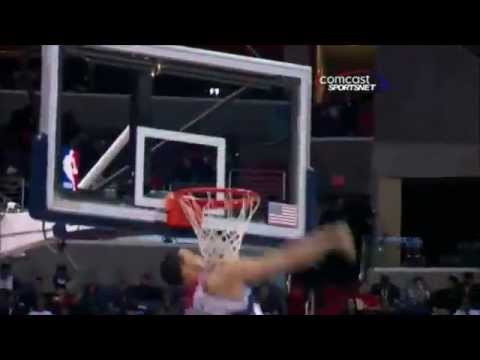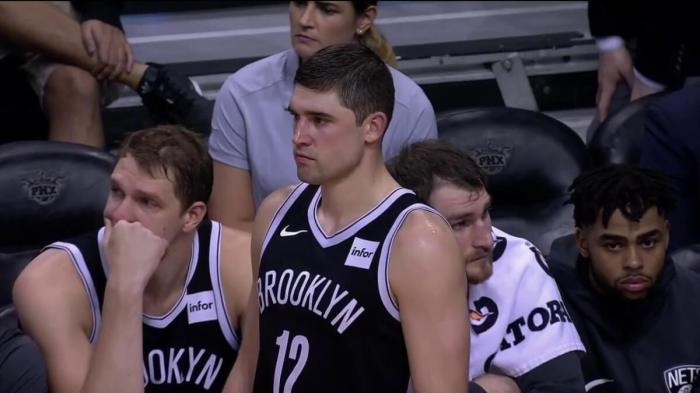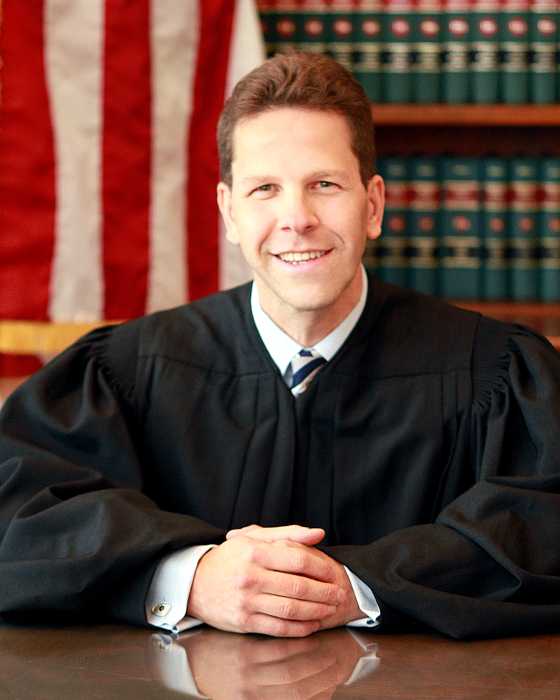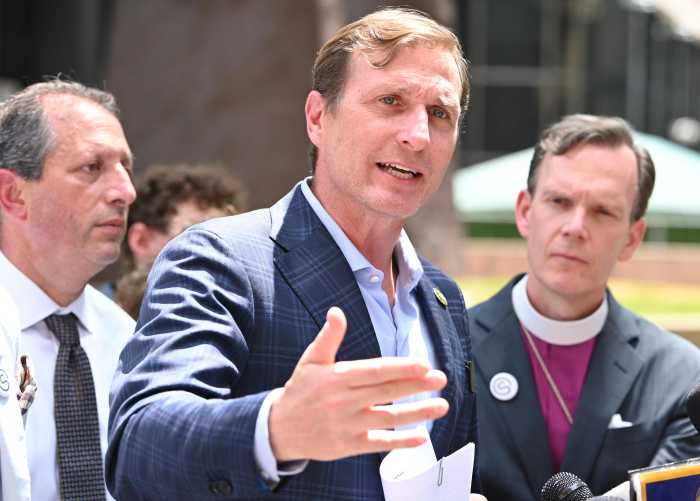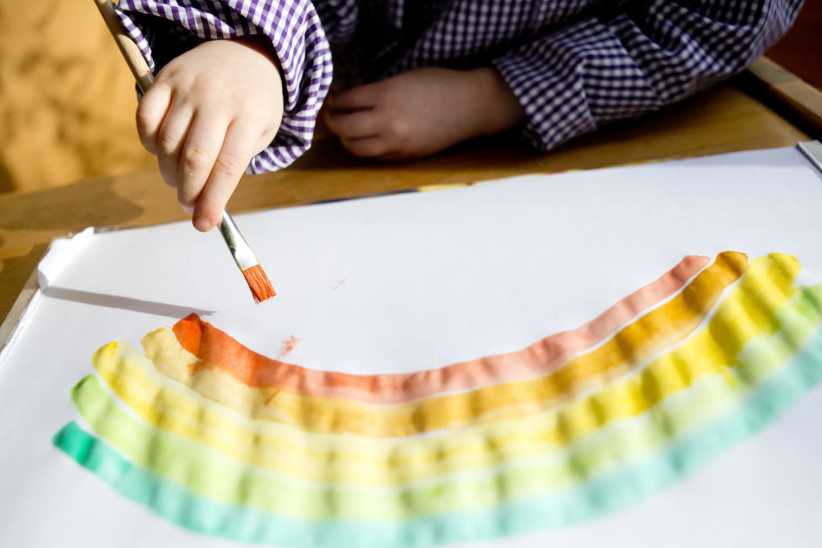Two weeks of training camp. A simultaneous free agency. A preseason in which some teams played just one game. With a lot of pieces flying around in a matter of just days leading up to the season, many teams this season experienced a steep learning curve, waiting for players to get used to their surroundings.
The Nets are one of those teams.
Deron Williams acknowledges that the team has played some “sloppy basketball,” saying in one press scrum that the lack of a sufficient training camp and preseason has left teams with new bodies struggling to get victories. New systems require acclimation and understanding.
So, I took a shot at evaluating that. I’ve developed a first draft of two formulas: Team Stability Rating (T.S.R.) and Roster Stability Rating (R.S.R.). The intention is relatively obvious: break down just how stable a roster is from last year to this year, by looking at percentage of minutes played in both seasons by the same players (with a wrinkle added for coaches). I used this to see if roster stability really does correlate with teams improving from last year.
I broke down the roster stability of all 30 teams, listed in order below. Though there’s not much league-wide correlation between roster stability and increased winning percentage, there are some telling results — including the first team on the list.
The formula is simple: take the percentage of minutes played by the same players on one team in this season, then multiply it by the percentage of minutes played by those players last season. I chose multiplying the numbers together rather than just adding up to give added weight to teams that gave strong minutes to the same players in both seasons: for instance, a team that plays the same players in 60% of minutes both seasons looks better than one that plays 90% of minutes last year and just 30% this year.
The difference between the formulas is that T.S.R. accounts for the coach (worth one roster spot — a perpetual “sixth man” of sorts) and R.S.R. is only concerned with players. I weighed the formula on a 0-100 scale: 0 being a new coach and completely overhauled roster, 100 meaning not one minute has come from a new player. The league averages for both T.S.R. and R.S.R. lay at 51 and 49, respectively, which I take as a good thing without really understanding why.
Paragons of stability
1. Philadelphia 76ers (T.S.R. 88, R.S.R. 86): A-ha! Right off the bat, there’s evidence that there’s something to this theory: the top team in roster stability (regardless of accounting for coaches) is one of the year’s biggest early surprises. The 76ers made habit of destroying opponents in the first two months of the season, so much so that given their early success they were even money to win this year’s title. They’ve come a bit back to earth as the season progresses, possibly because opponents are slowly coming closer to understanding each other as well as the Sixers do, but they achieved Lin-like league shock by decimating teams by 20 and 30 points with ease to kick off the year.
2. Chicago Bulls (T.S.R. 83, R.S.R. 80): You’ll see a pattern emerge as this list unfolds: good teams generally keep good players, and the bottom-feeders throw around the bad ones hoping to catch something that sticks. The Bulls have a 2008-Celtics like Ubuntu — their head coach is untouchable, their starting lineup is essentially identical (save swapping Keith Bogans for Richard Hamilton/Ronnie Brewer), and they’ve kept their record intact even losing Derrick Rose for a stretch.
3. Oklahoma City Thunder (T.S.R. 83, R.S.R. 80): In my opinion, the best-run organization in the NBA. All of their major starters return, their excellent coach is back, and sure enough, their already stellar record at the break is 18% better than last season’s regular season record (the same increase as the Sixers, actually). It doesn’t hurt that you’re keeping Kevin Durant, Russell Westbrook, and James Harden at the top, but the Thunder have an entire roster’s worth of players returning from last season’s squad.
Why screw up a good thing?
4. San Antonio Spurs (T.S.R 72, R.S.R. 67): If we did this rating back for a decade, I’d bet strongly that the Spurs would lead the pack. Tim Duncan, Manu Ginobili, Tony Parker, and Gregg Popovich have been around since the dawn of time, and the team welcomes back DeJuan Blair, Tiago Splitter, Richard Jefferson, Matt Bonner, et al into the fold. Standing as the clear 4th even with Ginobili sidelined for most of the year speaks to their year-in, year-out commitment to their players. Their record has declined since last year, but by less than you’d expect.
5. Orlando Magic (T.S.R. 67, R.S.R. 62): The Magic maintain their record even though Dwight Howard now plays games half-asleep. It pays to invest in good players over time, particularly Ryan Anderson.
6. Miami Heat (T.S.R. 67, R.S.R. 61): After a full year of “holy God are these three going to get it together or are we stuck watching flashes of greatness and clash city for the next five years,” the Heat finally seem to strike a harmonious balance. They’re the best team in the NBA, ranking first in offensive efficiency and seventh in defensive efficiency. The Big 3 are the difference, but they also return five rotation players and Erik Spoelstra.
Relationship purgatory
7. Memphis Grizzlies (T.S.R. 62, R.S.R. 55): Not even the injury to Zach Randolph can keep the Grizzlies out of the top 10. With a tenured coach in Lionel Hollins and major minutes from standbys Rudy Gay, Marc Gasol, Mike Conley, O.J. Mayo, and Tony Allen, the Grizzlies have a definite rapport and the ability to beat up on weaker, less stable franchises. However, that stability leaves them crippled going forward; with Randolph, Gasol, Gay, and Conley all signed to expensive long-term contracts, the Grizzlies have a 6th-seed’s talent and very little flexibility for the next four years.
8. Phoenix Suns (T.S.R. 59, R.S.R. 46):
#FreeSteveNash
A dash of Kyrie changes everything
9. Cleveland Cavaliers (T.S.R. 55, R.S.R. 48): One of the most improved teams from last year, the Cavaliers return most of their starting lineup and added the #1 overall pick, who’s exceeded my personal expectations. But outside of Kyrie, the team’s returned 11 players from last season’s squad that won just 19 games all season. My newest NBA wish: transplant Kyrie’s brain into John Wall’s body. The league would disintegrate trying to stop it.
It’s not you, it’s… well, it’s both of you
10. Washington Wizards (T.S.R. 54, R.S.R. 54): When you were in high school, did you know a couple that fought constantly, threw things at each other, barged into each other’s classes hurling obscenities at one another, made every party awkward, got way too drunk on otherwise timid occasions, broke up every other weekend, but for whatever reason never left each other, perhaps for fear that they couldn’t find anyone better?
Washington: You can do better. (John Wall: so can you.)
Malcoms in the Middle
11. Atlanta Hawks (T.S.R. 54, R.S.R. 47): It’s hard to make too many changes when you’re gifting Joe Johnson $20 million per season, but the injury to Al Horford and an oddly effective season from Willie Green forced the Hawks’ hands minutes-wise. Add a not-quite-dead Tracy McGrady to the mix of Larry Drew and six returning rotation players, and the Hawks’ record has improved over last season’s at this juncture.
12. Dallas Mavericks (T.S.R. 54, R.S.R 46): The league champions rank as slightly above average when taking into account Rick Carlisle, but in terms of pure roster stability the Mavericks lost their 2nd-best player/defensive anchor (Tyson Chandler) and three other major rotation players (J.J. Barea, Caron Butler, and DeCrazy Stevenson). Lamar Odom has fallen apart outside of Los Angeles, and while Vince Carter has had a solid season, the Mavs’ age and roster turnover spells a fall out of contention.
13. Utah Jazz (T.S.R. 53, R.S.R. 44): The Jazz are kind of at the opposite spectrum as the Mavericks — they dealt their star player a year ago and are in the midst of rebuilding around Gordon Hayward, Devin Harris, and three power forwards. They’ve returned five major-minute players from last year, but Jerry Sloan’s midseason retirement hurts them both in this rating and on the floor, but the increased playing time for Hayward, Favors, and Harris balances that out.
14. Boston Celtics (T.S.R. 50, R.S.R. 42): The Celtics begin their transition into non-contention by keeping their aging contingent together as long as possible while throwing around players at the bottom of their roster. Outside of the “Big 4,” only four players return from last year’s team: Jermaine O’Neal, Avery Bradley, Marquis Daniels, and Sasha Pavlovic. Not much of a recipe for success,
15. Indiana Pacers (T.S.R. 49, R.S.R. 49): The Pacers fall right around the league average of retainment regardless of accounting for coaching, and their record’s improved strongly as a result. They lost three of their top seven minute-getters, but kept most of their roster down the line intact and added David West and George Hill to the fold.
16. Milwaukee Bucks (T.S.R. 45, R.S.R. 37): Taking coaching out of the picture, the Bucks rank seven spots lower, as no player from last season has taken on a significantly increased role this year, and Andrew Bogut is sidelined with a broken left ankle. I’ve always thought Scott Skiles was a good coach, and he’s kept a band of misfits mostly intact and sane around Brandon Jennings.
17. Portland Trailblazers (T.S.R. 44, R.S.R. 36): Their saving grace: their returning coach Nate McMillan, and their five main returnees: Aldridge, Wallace, Camby, Matthews, and Batum. But outside of those five, the entire Blazers rotation has changed from a season ago; outside of those five, only Chris Johnson, Luke Babbitt, and Armon Johnson return, who combined for only 114 minutes this season. Not surprisingly, the team’s record is down from 2011, even with how well LaMarcus Aldridge is playing.
Young Love
18. Toronto Raptors (T.S.R. 44, R.S.R. 64): Going purely on players, the Raptors rank fourth — yes, fourth — in the NBA, but swapping coaches brings their ranking down. Still, the Raptors have improved considerably from a season ago, and even at just 10-23 have a lot to look forward to: Jose Calderon is their only major piece 30 or older (he’s 30), Ed Davis has shown flashes of goodness, and Andrea Bargnani’s fantastic showing early was cut short by a calf injury. Wouldn’t be surprised to see the Raptors rank much higher next season, after two years under Dwane Casey.
I want you back
19. Los Angeles Lakers (T.S.R. 44, R.S.R. 62): The decade-long carpet ride, riddled with efficient triangles and magical peyote, came to a close last year, and Mike Brown can’t control Kobe Bryant the way a system built on pulleys and Tex Winter’s genius can. They’re one of the more stable rosters player-wise, but this is one example where getting a new coach is a necessary evil.
The grass really is greener here
20. Denver Nuggets (T.S.R. 42, R.S.R. 33): Not too many teams saw as much pure player turnover as the Nuggets last season, mostly thanks to that one guy whose team shows up a few spots down. The honeymoon ride of last season appears over — the Nuggets are just one game over .500, despite last season’s furious post-Melo rush to the playoffs — but I don’t think the Nuggets would take the trade back. Now please play Ken Faried way, way more. Thanks.
21. Los Angeles Clippers (T.S.R. 41, R.S.R. 33): Point God.
22. Minnesota Timberwolves (T.S.R. 41, R.S.R. 58): This is the opposite situation of the Lakers; Rick Adelman is basically an infinite improvement over Kurt Rambis as coach. One sliver of Rambis Madness: Rambis 1) kept Kevin Love on the bench for two seasons, and 2) didn’t want him shooting three-pointers. Wait, let me repeat that. Kurt Rambis kept a player putting up a 25-14 this season chained to the bench for two years, and didn’t want the now reigning champion of the NBA’s Three-Point Shootout to shoot three-pointers.
Oh, and that Rubio kid is kind of okay.
Do The Right Thing
23. New Jersey Nets (T.S.R. 40, R.S.R. 31): Finally, we get to the team that made me wonder about all this: my hometown Brooklyn New Jersey Nets. The Nets retain four point guards (Deron Williams, Jordan Farmar, Sundiata Gaines, and Avery Johnson), one shooting guard (Anthony Morrow), one center (Brook Lopez, for 49 minutes over two games thus far), and two irrelevants (Damion James, Johan Petro). Outside of James (6 GP), the Nets don’t carry over a single small forward from last season. Same for shooting guard (minus Morrow) and power forward (minus Hump). That said, the Nets would surely be happy to see a little more roster turnover before March 15th.
The Nets are the fifth-worst team in the NBA when going strictly by player turnover, but this next team is even lower on that list…
24. New York Knicks (T.S.R. 39, R.S.R. 30): The other side! A contending run seemed in the Knicks fortunes after signing monster (sorry, “center” no longer applies here) Tyson Chandler to a four-year contract to help shore up their defense. Sure enough, that side has paid dividends; the Knicks post the 5th-best defensive rating in the NBA at the break. However, their allegedly high-octane offense led by Carmelo Anthony and Amare Stoudemire sputtered to start the season, and it took an insane, unstoppable run led by Jeremy Lin to bring them all the way back to one game under .500. Outside of Lin, the Knicks have relied heavily on rookie Iman Shumpert and a barrage of newcomers to help fix what’s leaking under the starting lineup. The result? A completely new team with a completely similar record to last season.
OH GOD, WHY IS THERE BLOOD ON THE CEILING?
25. Charlotte Bobcats (T.S.R. 38, R.S.R. 31): Boris Diaw led this team in minutes played last year and leads the returnees in minutes this year. Let’s just move on before I start convulsing.
/twitch
26. New Orleans Hornets (T.S.R. 38, R.S.R. 29): The Hornets have just six returning players and none of them are Chris Paul. PLEASE MOVE ON PLEASE MOVE ON NEXT SLIDE NEXT SLIDE
A new leading man
27. Houston Rockets (T.S.R. 37, R.S.R. 53): The Rockets — and the two teams below them — rank particularly poorly by this measure mostly because of their coaching changes. In the case of the Rockets, it’s made little difference; the Rockets have a slightly better record at the break after adding Chandler Parsons and Samuel Dalembert to their fold.
28. Detroit Pistons (T.S.R. 36, R.S.R. 52): Going purely by player stability, the Rockets and Pistons both rank above the league average, but the coaching changeover hurts both of their rankings here. Frank, like McHale, hasn’t changed the Pistons’ fortunes much — they’re about as bad as they were last season, if not a little worse. That didn’t stop them from beating the Nets twice in a row, though!
29. Golden State Warriors (T.S.R. 32, R.S.R. 46): Mamma, there goes that Kwame. Stephen Curry’s injury hurts them in this metric, but the big issue is that only five other players return to Golden State, and two of them are Monta Ellis and Andris Biedrins. The result is roughly an identical record to last season, even though every major piece of their roster is a year older.
50 first dates
30. Sacramento Kings (T.S.R. 30, R.S.R. 28): No matter how you slice it, the Kings are the least consistent team in the NBA: only four players from last season have played more than 400 minutes, and Paul Westphal was gone after seven games. It doesn’t help matters that their two most impactful players — Tyreke Evans and DeMarcus Cousins — aren’t particularly consistent when they’re on the floor, either. (Important note: this stability rating doesn’t take into account that Sacramento’s owners are trying to get the hell out of Sacramento as fast as they can. Stay strong, Sactowners. Even in the face of Outlaws.) That marked inconsistently hasn’t killed them — they’re actually a little better record-wise thus far than last season. But nobody’s jumping the Sacramento bandwagon anytime soon.
Final thoughts
This is the first draft of something else; there’s an idea sprinting around my brain that runs back for 3-5 years and weighs both the chance of improvement given the previous season’s record and the PER’s of coming and going players, but the All-Star break just isn’t enough time to compile all that data manually. However, while there’s a strong correlation between roster stability and winning percentage, there’s essentially none between team/roster stability and increased winning percentage from the previous year.
That isn’t to say that there aren’t intriguing factors. The most stable roster in the NBA just happened to be the one that shockingly eviscerated opponents through the first two months. The Cavaliers kept nearly their entire roster, added one major piece to their core, and have already won just six fewer games than all of last season. The Timberwolves added Ricky Rubio at point guard and a professional basketball coach to replace Kurt Rambis, and they’re the most improved team in the NBA. The Heat and Thunder have stuck together, and are a full year stronger than last year. As far as the Nets, a full-strength roster of Deron Williams and Brook Lopez was expected to produce stronger dividends than the rag-tag group of fill-ins they’ve thrown together.
Roster stability, in a vacuum, is a good thing. Players and coaches move through four dimensions: laterally, longitudinally, vertically, and through time. The latter generally makes the first three easier. But that comes with what I’d call the Washington caveat: it matters just as much who you’re keeping around.

